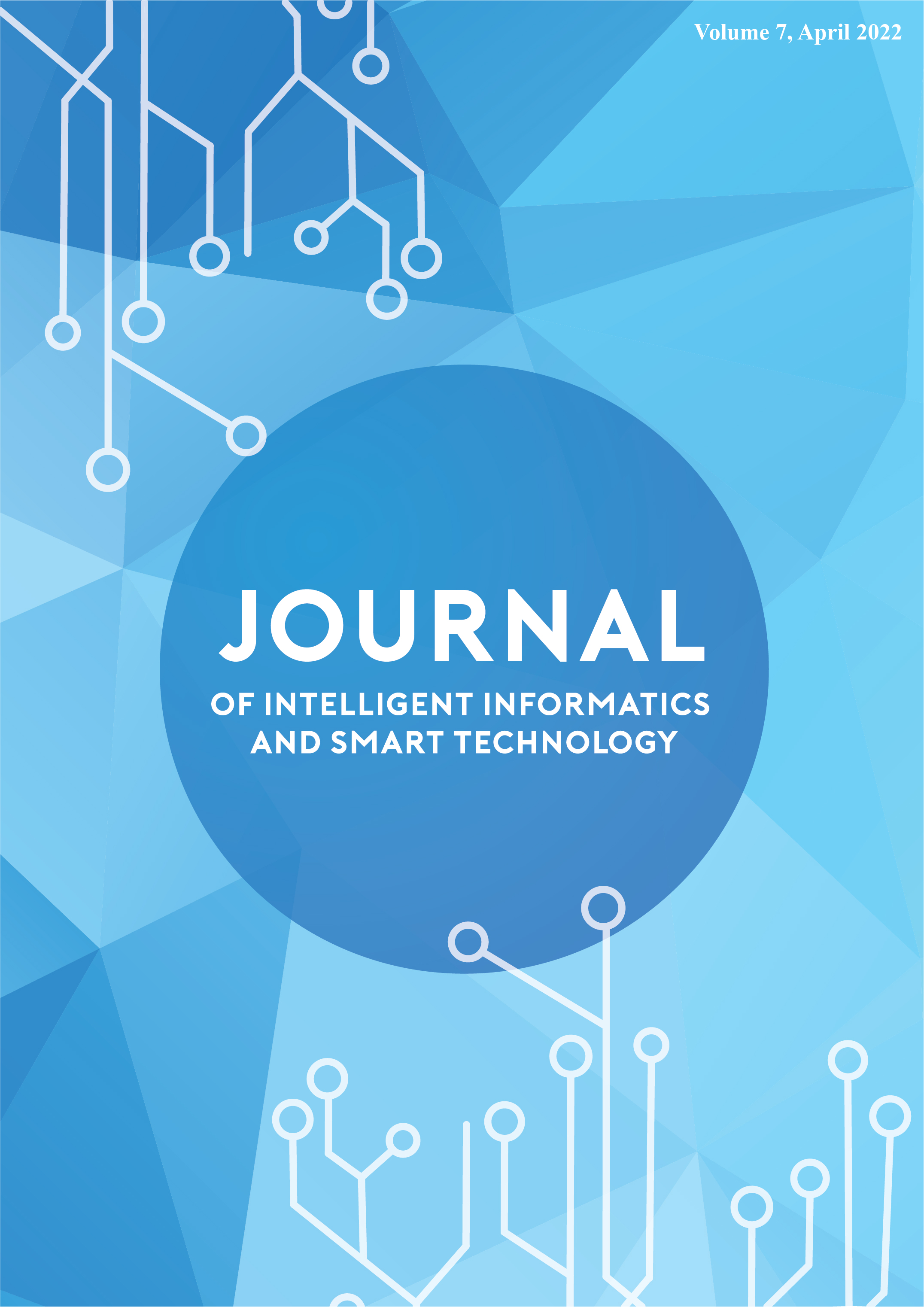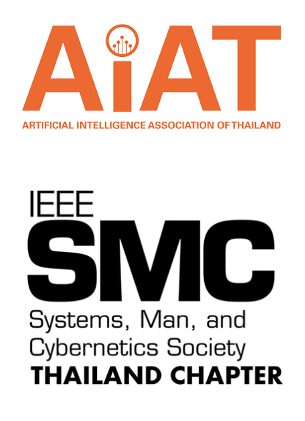Feature Disentanglement and Homogeneous Second Order Feature Propagation for Recommendation
DOI:
https://doi.org/10.14456/jiist.2022.11Keywords:
Feature disentanglement, negative effects, homogeneous neighborsAbstract
Personalized recommendation systems mine user preference, represent item feature and thus realize recommendation by modeling user-item interaction. Because the interaction naturally forms the bipartite graph, Graph Convolution Neural Networks are used to learn representation of nodes for recommendation recently. Current approaches, however, seldom give recommendation results from causing factors. Furthermore, they may encounter over-smoothing problem when addressing dense graphs and struggle to model sparse graphs. For alleviating these problems, this paper proposes feature disentanglement and homogeneous second order feature propagation for recommendation. Features of the users and items are disentangled into two parts resulting in the final ratings. Then we improve Neighborhood Routing Algorithm via adding rating embedding so as to simultaneously learn the positive and negative effects of neighborhood nodes on the central node. Finally, we apply similar homogeneous neighbors which are statistically-validated by Bipartite Score Configuration Model to the second convolution for mitigating the problems happening on the dense graphs and sparse graphs. Experimental results on two different scale real-world datasets demonstrate the effectiveness of the proposed model.
References
J. B. Schafer, D. Frankowski, J. Herlocker, and S. Sen, "Collaborative filtering recommender systems," in The Adaptive Web. Springer, 2007, pp. 291–324.
N. Rao, H.-F. Yu, P. Ravikumar, and I. S. Dhillon, "Collaborative filtering with graph information: consistency and scalable methods," in Proceedings of the 28th International Conference on Neural Information Processing Systems, vol. 2, 2015, pp. 2107–2115.
M. J. Pazzani and D. Billsus, "Content-based recommendation systems," in The Adaptive Web. Springer, 2007, pp. 325–341.
P. B. Thorat, R. Goudar, and S. Barve, "Survey on collaborative filtering, content-based filtering and hybrid recommendation system," International Journal of Computer Applications, vol. 110, no. 4, pp. 31–36, 2015.
F. Monti, M. M. Bronstein, and X. Bresson, "Geometric matrix completion with recurrent multi-graph neural networks," in Proceedings of the 31st International Conference on Neural Information Processing Systems, 2017, pp. 3700–3710.
R. van den Berg, T. N. Kipf, and M. Welling, "Graph convolutional matrix completion," 2018.
J. Zhang, X. Shi, S. Zhao, and I. King, "Star-gcn: Stacked and reconstructed graph convolutional networks for recommender systems," in IJCAI, 2019.
S. Wu, W. Zhang, F. Sun, and B. Cui, "Graph neural networks in recommender systems: A survey," arXiv e-prints, pp. arXiv–2011, 2020.
X. Wang, D. Wang, C. Xu, X. He, Y. Cao, and T.-S. Chua, "Explainable reasoning over knowledge graphs for recommendation," in Proceedings of the AAAI Conference on Artificial Intelligence, vol. 33, no. 01, 2019, pp. 5329–5336.
S. Fan, J. Zhu, X. Han, C. Shi, L. Hu, B. Ma, and Y. Li, "Metapath-guided heterogeneous graph neural network for intent recommendation," in Proceedings of the 25th ACM SIGKDD International Conference on Knowledge Discovery& Data Mining, 2019, pp. 2478–2486.
J. Shi, H. Ji, C. Shi, X. Wang, Z. Zhang, and J. Zhou, "Heterogeneous graph neural network for recommendation," arXiv e-prints, pp. arXiv–2009, 2020.
S. Wang, L. Hu, Y. Wang, X. He, Q. Z. Sheng, M. A. Orgun, L. Cao, F. Ricci, and S. Y. Philip, "Graph learning based recommender systems: A review," in Proceedings of the 30th International Joint Conference on Artificial Intelligence, 2021, pp. 4644–4652.
H. Ma, D. Zhou, C. Liu, M. R. Lyu, and I. King, "Recommender systems with social regularization," in Proceedings of the Fourth ACM International Conference on Web Search and Data Mining, 2011, pp. 287–296.
W. Fan, Y. Ma, Q. Li, Y. He, E. Zhao, J. Tang, and D. Yin, "Graph neural networks for social recommendation," in The World Wide Web Conference, 2019, pp. 417–426.
L. Wu, J. Li, P. Sun, R. Hong, Y. Ge, and M. Wang, "Diffnet++: A neural influence and interest diffusion network for social recommendation," IEEE Transactions on Knowledge and Data Engineering, 2020.
B. Perozzi, R. Al-Rfou, and S. Skiena, "Deepwalk: Online learning of social representations," in Proceedings of the 20th ACM SIGKDD International Conference on Knowledge Discovery and Data Mining, 2014, pp. 701–710.
C. Becatti, G. Caldarelli, and F. Saracco, "Entropy-based randomization of rating networks," Physical Review E, vol. 99, no. 2, p. 022306, 2019.
L. Hu, S. Xu, C. Li, C. Yang, C. Shi, N. Duan, X. Xie, and M. Zhou, "Graph neural news recommendation with unsupervised preference disentanglement," in Proceedings of the 58th Annual Meeting of the Association for Computational Linguistics, 2020, pp. 4255–4264.
Y. Zheng, C. Gao, X. Li, X. He, Y. Li, and D. Jin, "Disentangling user interest and conformity for recommendation with causal embedding," in Proceedings of the Web Conference, 2021, pp. 2980–2991.
J. Ma, P. Cui, K. Kuang, X. Wang, and W. Zhu, "Disentangled graph convolutional networks," in International Conference on Machine Learning. PMLR, 2019, pp. 4212–4221.
F. Li, Z. Chen, P. Wang, Y. Ren, D. Zhang, and X. Zhu, "Graph intention network for click-through rate prediction in sponsored search," in Proceedings of the 42nd International ACM SIGIR Conference on Research and Development in Information Retrieval, 2019, pp. 961–964.
J. Sun, W. Guo, D. Zhang, Y. Zhang, F. Regol, Y. Hu, H. Guo, R. Tang, H. Yuan, X. He et al., "A framework for recommending accurate and diverse items using bayesian graph convolutional neural networks," in Proceedings of the 26th ACM SIGKDD International Conference on Knowledge Discovery& Data Mining, 2020, pp. 2030–2039.
F. Saracco, M. J. Straka, R. Di Clemente, A. Gabrielli, G. Caldarelli, and T. Squartini, "Inferring monopartite projections of bipartite networks: An entropy-based approach," New Journal of Physics, vol. 19, no. 5, p. 053022, 2017.




